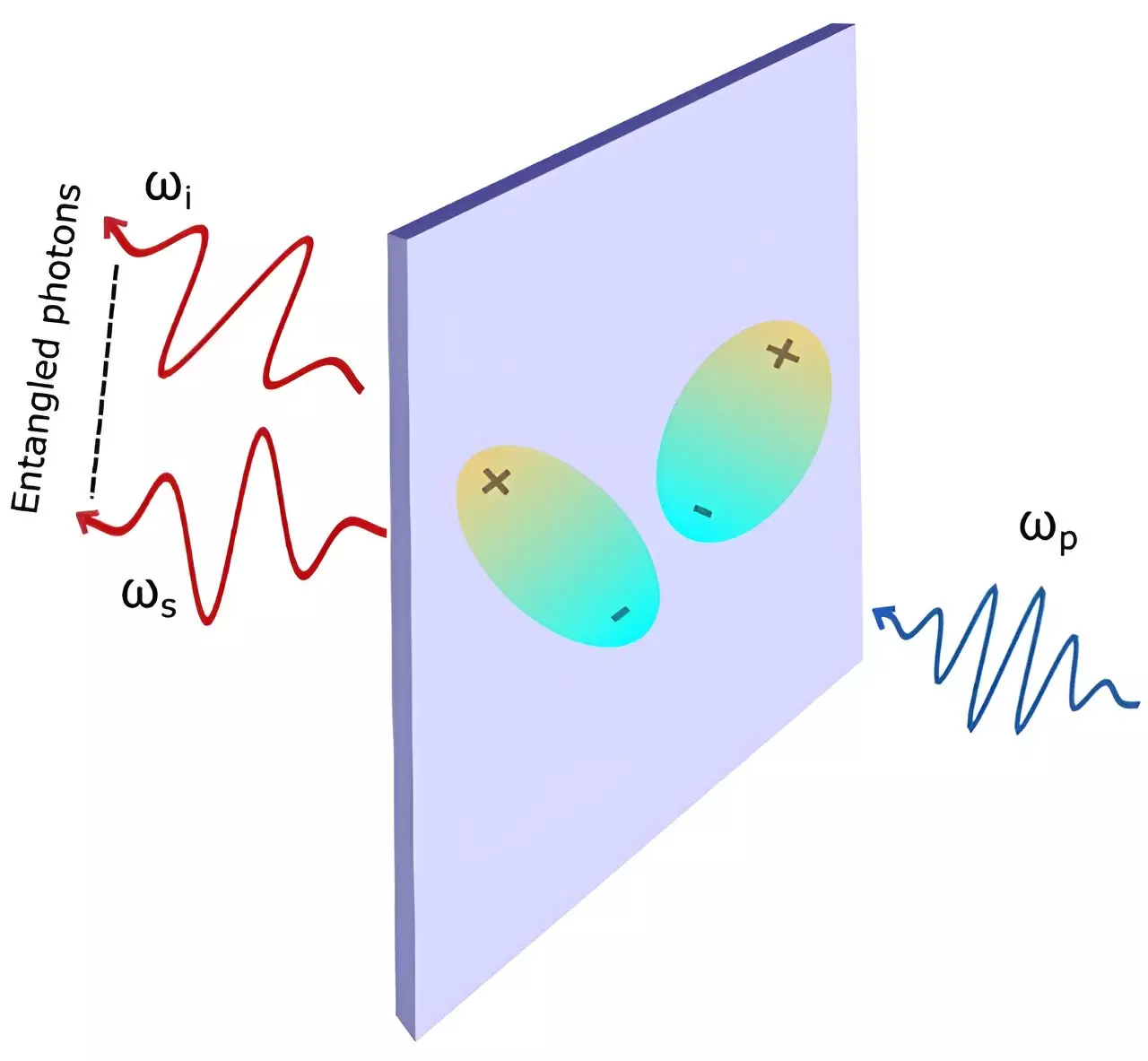Excitonic resonances and interactions between excitons have been shown by scientists at the National University of Singapore (NUS) to play a crucial role in boosting the efficiency of generating entangled photon pairs. This breakthrough has significant implications for the development of ultrathin quantum light sources, which could revolutionize the field of quantum technologies.
Quantum entanglement serves as the foundation for numerous quantum technologies. It refers to the interconnectedness of two quantum particles’ properties, even when separated by vast distances. In the case of entangled photons, which are light particles without mass, they are typically produced by directing light onto certain non-linear optical crystals through a process called spontaneous parametric down-conversion (SPDC). However, SPDC is known to be an inefficient process, prompting researchers to explore new avenues for enhancing its efficiency.
Exploring Excitonic Interactions in Crystals
Associate Professor Su Ying Quek and her research team at NUS have demonstrated that the efficiency of SPDC can be significantly improved by leveraging many-body excitonic interactions within non-linear optical crystals. Excitonic interactions involve the interplay between negative and positive charges generated when light interacts with the crystal, giving rise to excitons – pairs of opposite charges representing the crystal’s fundamental excitations. The team’s findings, published in the journal Physical Review Letters, showcase how bringing these charges closer together can boost SPDC efficiency, particularly depending on the energy or frequency of the light.
Enhancing SPDC Efficiency
Through fully quantum mechanical calculations, the research team analyzed the non-linear optical response of crystals to incident light, taking into account excitonic effects. Lead author Dr. Fengyuan Xuan explained that the closeness of opposite charges due to crystal excitations enhances the probability of transitions involved in SPDC. By comparing their results with more conventional treatments neglecting charge interactions, the team highlighted the marked impact of excitonic interactions on SPDC efficiency.
Prof. Quek emphasized the advantages of employing ultrathin crystals to address the phase matching problem associated with SPDC. While conventional wisdom suggested that ultrathin crystals were less efficient due to their volume, the team’s research showed that stronger excitonic interactions in these crystals could counteract this trend. This makes ultrathin crystals a viable option for producing entangled photons and advancing quantum technologies.
The researchers applied their theoretical framework to NbOI2, a layered non-linear optical material, to investigate both SPDC and second harmonic generation (SHG). They observed a strong excitonic enhancement, especially when the frequency of the “pump” beam aligns closely with an excitation frequency in the crystal. Moreover, matching one of the entangled photons’ frequency with another crystal excitation frequency further augmented SPDC efficiency. These discoveries open pathways for leveraging ultrathin materials in generating entangled photons for next-generation quantum-photonic devices.
The exploration of excitonic interactions within non-linear optical crystals represents a promising avenue for enhancing the efficiency of quantum light sources. By harnessing the power of excitonic resonances, researchers are unlocking new possibilities in the realm of quantum technologies, paving the way for the development of advanced quantum-photonic platforms and devices.


Leave a Reply